Animal Tracking and Man Tracking
If you have watched any Hollywood films, you have probably come across a movie that includes the need for a tracker. This tracker is impossible to find and is the only person in the whole world that possess the skill to hunt down man or beast. They have been painted as an elite group that very few will ever be admitted into. These films insinuate regular people could never hope to develop animal tracking or man tracking skills.
Of course, there are some folks out there who have put themselves into that elite group and are essentially fakes or wanna-be trackers. They claim to be experts at man tracking and animal tracking and make sure everybody knows they are a tracker but in reality, they do not possess the necessary bushcraft skills. Unfortunately, these “experts” decide to become teachers and as you can imagine, it is not a good combination.
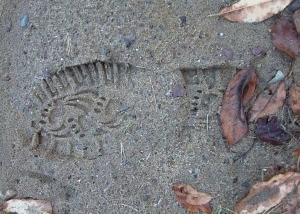
I will freely admit I am not an expert at tracking. In fact, I have only been truly studying and developing my tracking skills in the past 10 years, but I have always done a little tracking. Because I am something of a newbie in the tracking world, I will only provide some of the most basic tips.
Why Learn Tracking Skills?
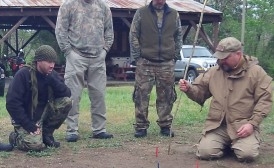
So, why does one learn to track? Well, let me reverse that and ask you a few questions:
- If you were lost, would you like to be able to find your way back by reading the signs you left on your way in?
- Would you like to be able to find a member of your party that has gone missing?
- Would you like to know what animals are sharing an area with you? Animals can tell you a lot about where you are.
- Would you like to know what signs you could leave for a team that is trying to find you?
If you answered yes to any of these questions, then you understand why animal tracking and man tracking is a valuable skill to learn.
The Super 7
Now, let’s talk about the 7 characteristics of reading a track. I like to refer to these as the Super Seven Methods of Seeing a Track:
- Outline, including edges, partials and inside areas
- Shapes like toes, heel, pads and claws of an animal
- Color of the different substrate and shadows
- Value based on the different levels of substrate according to position of the sun, which creates darker or lighter areas
- Texture–is it smooth or rough
- Shine of the material in and around the track. Do they absorb or reflect light
Rhythm of the spacing between tracks
The only way you can develop your tracking skills is by taking these tools and actually applying them during regular expeditions outside.
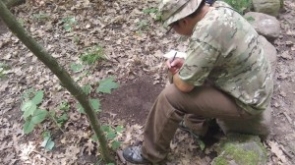
Tracking – Methods for Seeing More Detail
Here are some more tips for really seeing a track and all the secrets it can tell you when you really study it.
Sun-Track-You
With this method, you are utilizing the light from the sun to get a really good look at the details within and around the track. You want to see the track in its entirety, without any obstructions, such as your own shadow. To do this, you need to sandwich the track between yourself and the sun. When you do this, you are allowing the natural ridges, outlines and details of the track to stand out, giving you more information. If the sun is hidden by clouds or it is dark, you can use a flashlight in place of the sun. You could also use a mirror or shiny object to reflect light onto the track. This gives you an excellent advantage of being able to direct the light and create shadows on a specific part of the print.
Get Low
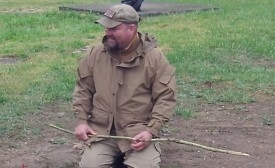
To truly see a track, you need to look at it from several different angles and heights. You will have to get down and dirty. Simply bending over will not give you all the detail you need to glean information from the track. This is a crucial part of animal tracking and man tracking. When you are at eye level with the track and its surroundings, you will be able to gather more details.
Patience
Take it slow and easy. Do not go stomping all over the evidence surrounding the track when you first spot it.
Spot the track
Study the track and surroundings
Approach the track and begin cataloging the details
You do not want to disturb any other signs that can help you in your tracking. You must take the time to look at the whole picture and not get too focused on the track itself. By stomping in unawares of the surroundings, you may also end up putting your own footprint over a track.
Sketch Your Track
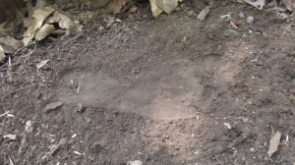
You should always carry a notebook with you. When you see a track, sketch it to the best of your ability and make notes about every detail you see. A tracking notebook is a common practice among the experts. In fact, the first part of learning tracking is the sketching. Don’t automatically toss the idea of learning to track because you don’t like to sketch or don’t think you can do it. You are not trying to become an artist; you are simply drawing what you see. It is an extremely valuable tool that you must embrace.
Tracking in Leaf Litter
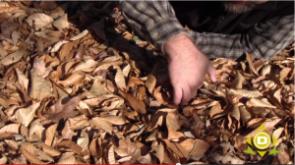
One element of both animal tracking and man tracking is the evaluation of leaf litter to determine whether it has been disturbed. This makes leaf litter tracking a valuable skill for nature enthusiasts.
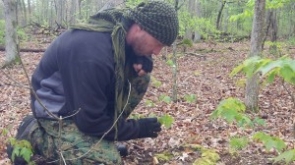
In this video, you will see how to identify disturbances within leaf litter. You are not looking at the leaves, but whether or not they have been disturbed in any way. Disturbance is qualified as anything that is different from the surrounding, or base line area. If most of the leaves are laying flat and you see a few that have upturned corners or seem to be shiny or standing up–those are disturbed.
One of the best ways to truly see a disturbance is to get down and low and get a real good close up look at what you think may be a disturbance. Although you will not see an actual track, you will be able to tell if someone or something has been through an area.
About The Author
Craig Caudill is an outdoor survival enthusiast who teaches outdoor survival skills training online at Dan’s Depot and offline in the wilderness at his Nature Reliance School.
He is also a featured author for How To Survive Stuff.





Thank you for caring